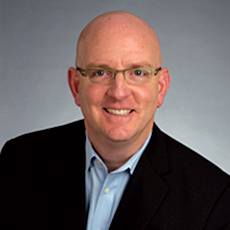
The recent acquisition of WellAware by Healthsense is reflective of the ongoing transformation of healthcare into a performance- and wellness-centric system that leverages advanced aging services technologies to support the diverse and rapidly evolving needs of the expanding senior population.
Specifically, the emergence of pay-for-performance care and reimbursement models has intensified the focus on increasing the quality of and access to care while reducing associated costs. Deploying advanced technologies to better target care utilization is an important element of accomplishing these objectives.
When those technologies include remote monitoring, the added bonus for seniors is greater independence and better quality of life. For senior living communities, it helps address the occupancy challenges associated with an older, higher-acuity population by enabling seniors to safely remain in independent living apartments, even as their care needs increase.
By monitoring “activities of daily living,” remote sensors play an increasingly important role in managing the health and wellness of the expanding senior population by
- allowing seniors to securely age in place while still having ready access to the healthcare resources they need.
- providing caregivers with the timely information they need to intervene appropriately.
With just a scant few decades under its belt, it may seem that remote monitoring is too new and untested to play such a central role in transforming an industry that consumes nearly 18 percent of the U.S. GDP. However, its youthfulness is deceptive; remote sensor functionality has quickly matured from reactive safety monitoring to proactive and interactive wellness management.
No longer limited to detecting emergency situations such as falls, today’s remote sensors can be used to monitor and measure key wellness indicators such as sleep quality, activity and other physiological information and alert caregivers to potential emergent health conditions. The end result is more informed and proactive care decisions that reduce costs and slow the progression of seniors through the care continuum.
Also evidence of its rapid maturity is the presence of remote monitoring at many of the nation’s leading senior living communities. Evangelical Lutheran Good Samaritan Society, which tops the LeadingAge Ziegler 100 as the largest non-profit senior living provider, is one of the largest users of remote monitoring with nearly 2,000 systems deployed. Founding members of the Healthsense Care Alliance including Ebenezer, The Lutheran Home Association and Northfield Retirement Community have all deployed sensor technologies. Others include Volunteers of America (VoA) Presbyterian Homes & Services and Ecumen — just to name a few.
The maturation of the market is further evidenced by the accelerated consolidation among leading technology providers, most recently the Healthsense-WellAware acquisition, but also activity such as the acquisition of QuietCare by GE.
This consolidation is a necessary next step in the evolution of remote monitoring. It brings together best practices, complementary platforms and innovative customers necessary for these technologies to impact workflows and change outcomes even as the care and access needs of the elderly population — and the healthcare system as a whole — evolves.
Bryan Fuhr is co-founder and vice president of marketing and business development of HealthSense, Inc. He can be reached at [email protected].



